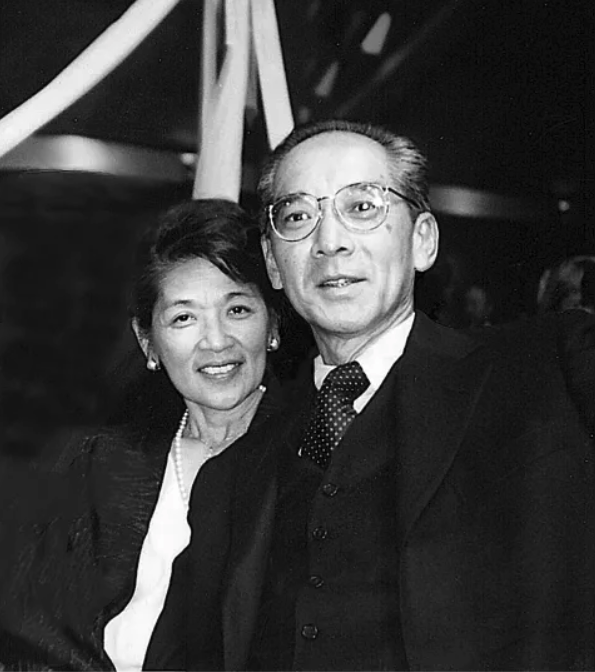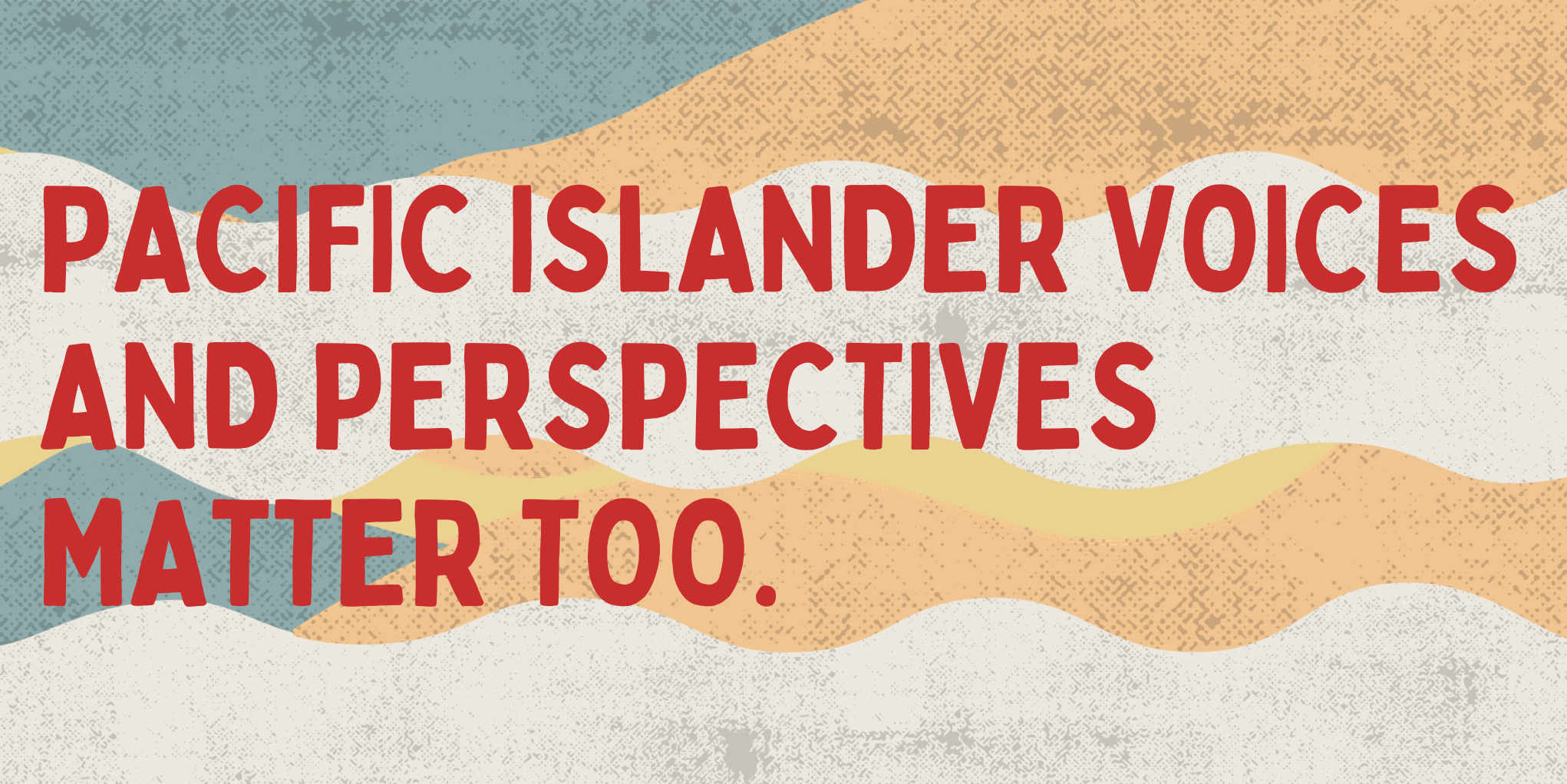Pacific Islanders and the AAPI Umbrella: Why Their Voices Are Often Overlooked
For decades, “Asian American and Pacific Islander” (AAPI) has been an inclusive term for diverse groups with roots across Asia and the Pacific islands of Melanesia, Micronesia, and Polynesia. The label encompasses a diverse array of cultures and identities, representing approximately 26 million Americans, per the 2023 U.S. Census.
But where did this term come from?
The Asian American label originated in the 1960s when Yuji Ichioka and Emma Gee, two graduate students at the University of California, Berkeley, formed the Asian American Political Alliance (AAPA) to unify Asian diasporic groups and build collective power.
Photo of Emma Gee and Yuji Ichioka in 1999 at the 30th anniversary celebration of the establishment of the Asian American Studies Center at UCLA
“Asian American” emerged as a radical concept in the 1960s, rejecting derogatory labels like “oriental” and the stereotypes that cast Asian groups as passive. It was a call for dignity and a tool for political solidarity, as exemplified by the AAPA, which allied with Black-led movements and other communities of color to tackle shared struggles.
The term gradually gained acceptance, but its definition became more complicated after the Immigration and Nationality Act of 1965. The legislation ushered in huge waves of South and Southeast Asian immigrants and refugees in the following decades. And as the demographics of Asian America shifted, the challenges of the term became evident.
By the 1980s, the Asian American umbrella expanded to include communities from the Pacific islands. In 1978, Congress passed a resolution for Asian/Pacific Heritage Week, eventually becoming Asian/Pacific Islander Heritage Month. Then, the Office of Management and Budget officially divided the “Asian or Pacific Islander” racial classification in its data collection practices in 1997.
However, some feel the term flattens the differences between Asian Americans and Pacific Islanders.
As the AAPI umbrella continues to widen, some argue that the very different needs and issues of Pacific Islanders remain underrepresented.
The term is here, so we work around it…But I think everyone working within the umbrella also recognizes that there’s some good and some bad. The bad is that too many of our communities go unseen.
Estella Owoimaha-Church, CNN, 2023
Pacific Islanders represent a small portion of the U.S. population—approximately 0.5% as of 2020, compared to 7.2% for Asian Americans. This numerical disparity contributes to their relative invisibility within the AAPI framework. Even within broader data sets, Pacific Islanders are frequently grouped with Asians, making it difficult to parse specific trends affecting their communities. The problem is compounded by the tendency to aggregate data under the AAPI label, obscuring unique challenges faced by Pacific Islanders.
Health, economic, education, and employment disparities vary vastly between Asian Americans and Pacific Islanders, as well as among the ethnicities within those labels. This variation often goes unacknowledged under the AAPI umbrella, treating two distinct groups as one and similar. For instance, during the COVID-19 pandemic, Native Hawaiians and Pacific Islanders experienced the highest per capita death rates in several states, while Asian Americans recorded some of the lowest. The lack of disaggregated data concealed this disparity, hindering policymakers from addressing Pacific Islander communities’ specific needs.
In education and economic metrics, Pacific Islanders also face significant inequities. Only 25% of Pacific Islanders attain a bachelor’s degree, compared to 35% of the overall population, and their poverty rate stands at 17.6%, significantly higher than the national average of 12.8%.
Healthcare policies have also disadvantaged Pacific Islanders, particularly those from Compact of Free Association (COFA) nations such as the Marshall Islands, Palau, and Micronesia. Many COFA migrants, despite paying taxes, face barriers to accessing Medicaid and other public benefits due to historical treaties that left them without full rights.
When examining health insurance coverage, Pacific Islanders also experience a higher rate of uninsurance compared to both Asian Americans and White people. Specifically, in 2021, 11% of Pacific Islanders were uninsured, compared to 6% of Asians. This lack of access contributes to poor health outcomes and exacerbates the vulnerabilities of PI communities.
So, how should we better include Pacific Islanders?
Anita Hofschneider, a journalist based in Honolulu, argues that people must be intentional and specific when describing communities. When the term AAPI is broadly used, it “gives the impression that the communities are the same and that the issues that they are experiencing are the same, but that’s often not the case.” she said.
Specificity in language and the disaggregation of data are essential. Using precise language, such as explicitly naming Pacific Islander communities when covering stories about their issues, is critical for ensuring accurate representation.
Disaggregated data, or data that breaks down information by specific ethnic or cultural groups, can shed light on the distinct challenges faced by Pacific Islanders and drive more effective policymaking. By separating Pacific Islander data from Asian American data, it becomes possible to better understand the issues, such as high rates of poverty, lower educational attainment, health disparities, and even lower media representation, that uniquely affect these communities.
As the AAPI community grows and evolves, true inclusivity can be achieved by giving all groups within the umbrella—especially those often overlooked—the representation and attention they deserve. Moving beyond broad labels is essential to working toward a future where Pacific Islanders are no longer invisible in the conversation.
For more information on Pacific Islander issues, you can visit and check out organizations like the National Pacific Islander Educators Network (NPIEN) or the Pacific Islander Community Association (PICA). Additionally, individuals should ensure that they do not overshadow Pacific Islanders with broader labels by using specific and accurate terms in schools, workplaces, and conversations.
Representation requires going beyond labels by creating spaces where we actively see, hear, and support Pacific Islanders rather than merely acknowledging them. By prioritizing their stories and addressing their challenges, we can honor the full diversity of the AAPI umbrella and build a coalition that truly works for all.

